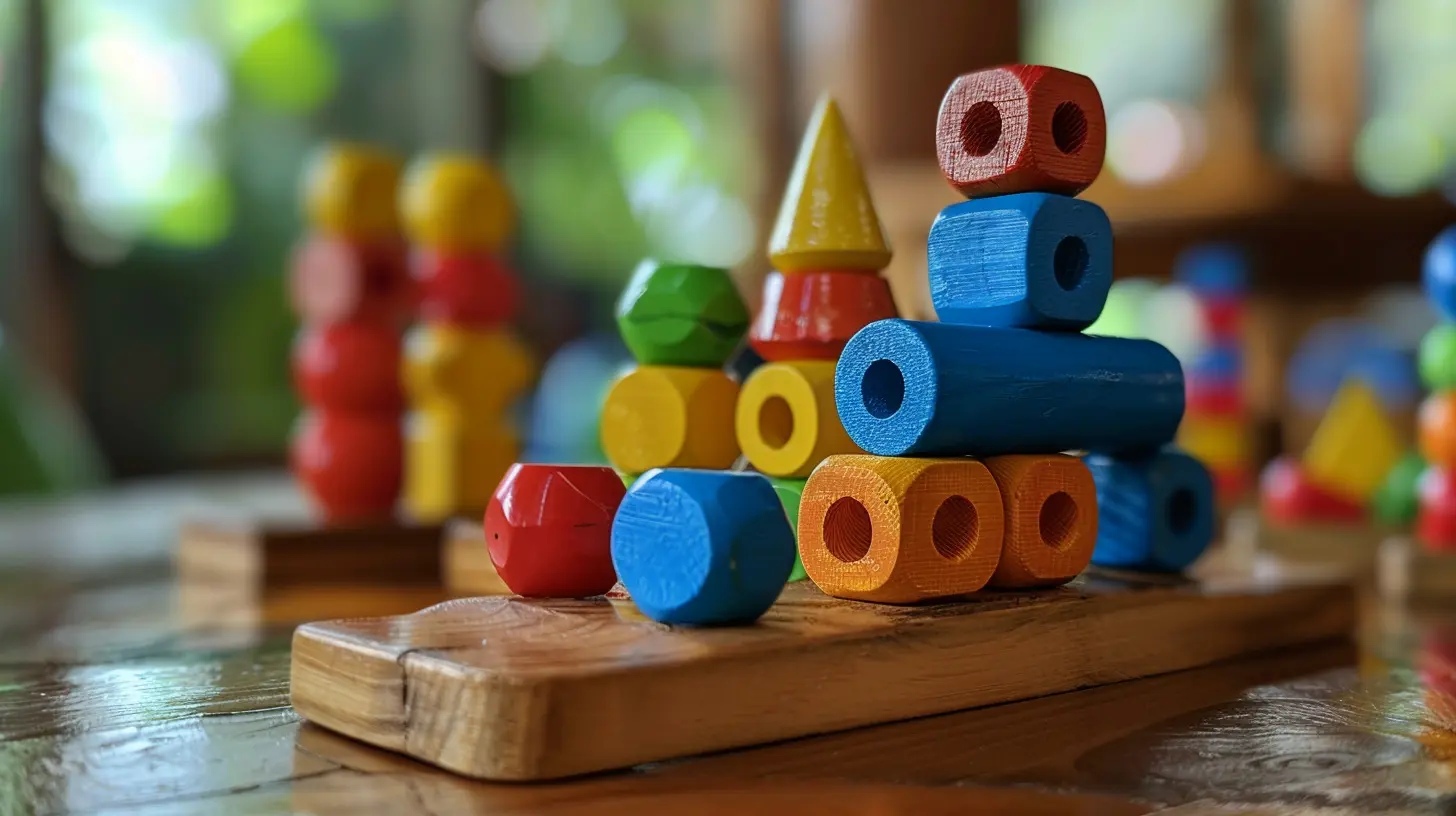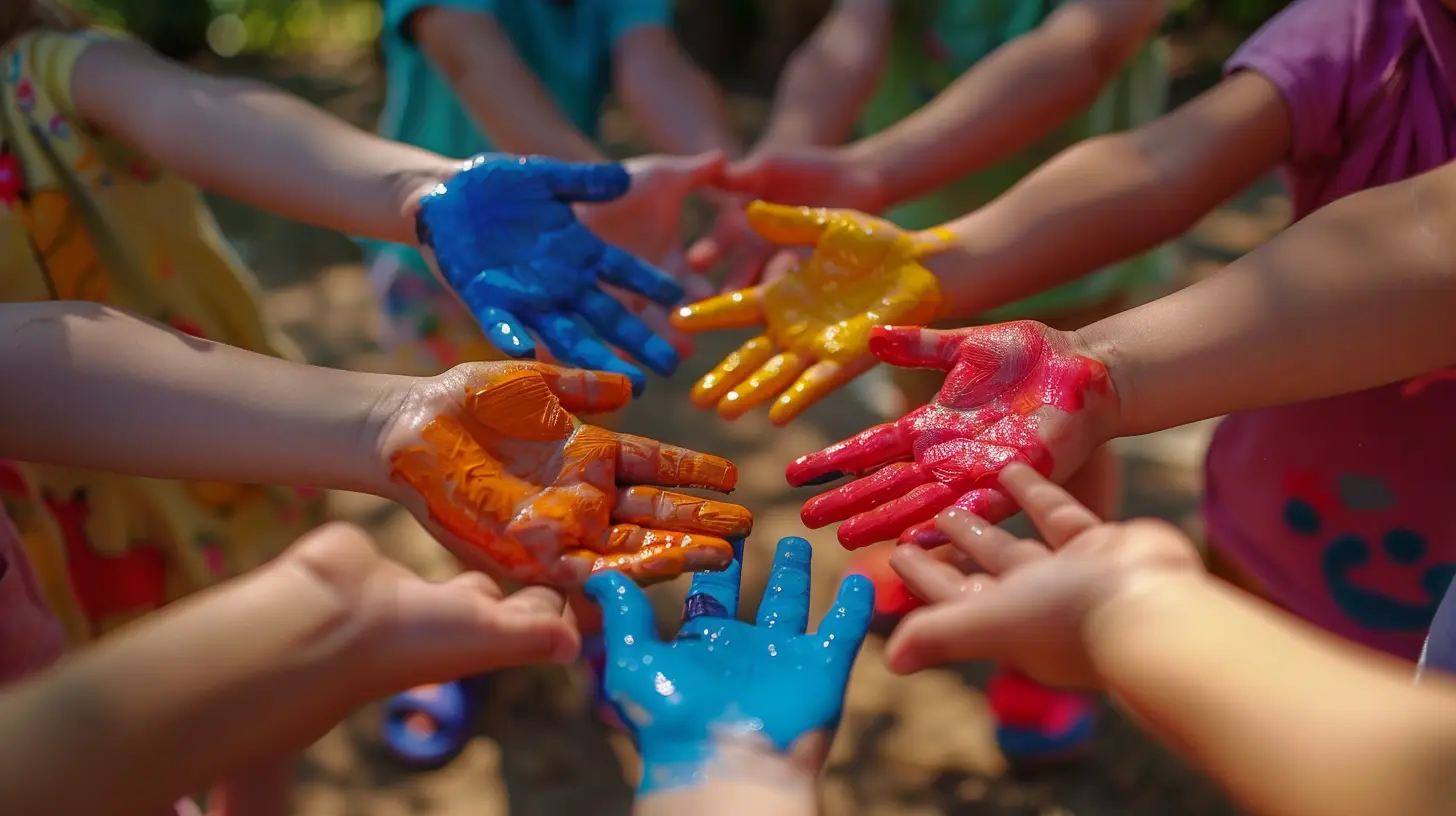Cooperative Play Ideas to Teach Kids Teamwork
16 December 2024
Teamwork is one of those invaluable skills we all need in life. Whether it's solving a group project at school, working in a team at a job, or even navigating family dynamics, collaboration is everywhere. And you know what? It’s never too early to introduce this concept to kids. The best way? Through play! Cooperative play not only teaches kids how to work together but also helps them learn problem-solving, communication, and empathy. Plus, it's a lot of fun! So let’s dive into some cooperative play ideas that can help teach kids teamwork in the most engaging and enjoyable way.
Why Cooperative Play Matters
Before we jump into the activities, let’s quickly chat about why cooperative play is so important. Unlike solo play or competitive play, cooperative play is all about working together toward a common goal. It encourages kids to share ideas, listen to others, and figure out how to solve challenges as a team. This kind of play builds social skills, fosters emotional intelligence, and even boosts creativity. Basically, cooperative play is like a secret recipe for raising little team players who thrive in group settings.
How to Encourage Cooperative Play
You might be thinking, “Sounds great, but how do I actually get my kids to play cooperatively?” Don’t worry, it’s not as tricky as it sounds. The key is to provide activities that naturally promote teamwork and make it rewarding for everyone involved. Here are a few tips:1. Set the Stage: Choose activities that require kids to work together to achieve a goal.
2. Give Clear Instructions: Help kids understand the rules and the objective before they start.
3. Model Teamwork: If you participate, show them how to collaborate – take turns, share ideas, and celebrate wins together.
4. Praise Team Effort: Highlight the importance of working as a team rather than focusing on individual achievements.
With these tips in mind, let’s get to the fun part: the activities!
Cooperative Play Ideas to Teach Kids Teamwork
1. Build a Fort Together
Who doesn’t love a good fort? Grab some blankets, cushions, and chairs, and encourage your kids to work together to create the ultimate hideout. Building a fort requires planning, problem-solving, and communication—all essential teamwork skills. Plus, the end result is a cozy space they can enjoy as a group.- How to do it: Have kids assign roles, like one person gathering materials while another plans the layout. Encourage them to share ideas and compromise on decisions.
- Why it works: It’s a hands-on activity that rewards cooperation with an epic hangout spot.
2. Scavenger Hunt with a Twist
Turn a classic scavenger hunt into a cooperative adventure by having kids team up to find all the items on a list. They’ll have to communicate, divide tasks, and work together to finish the challenge.- How to do it: Create a checklist of easy-to-find items (e.g., a red sock, a toy car, a leaf). Pair up the kids and give them a time limit to collect everything.
- Why it works: This activity promotes collaboration and time management while keeping the excitement high.
3. Group Art Project
Art can be a fantastic way to nurture teamwork. Instead of individual projects, give kids one large canvas or piece of paper and ask them to create something together.- How to do it: Provide paint, markers, or crayons and suggest a theme, like a jungle or an underwater scene. Encourage them to assign sections to each other or collaborate on shared areas.
- Why it works: It teaches compromise, as kids will need to decide on colors, shapes, and placement. Plus, it results in a beautiful piece of team-made artwork!
4. Human Knot
This classic icebreaker game works wonders for teaching communication and teamwork. Kids have to untangle themselves from a “human knot” without letting go of each other’s hands.- How to do it: Have everyone stand in a circle and grab hands with two different people (not the ones next to them). Then, challenge the group to untangle themselves into a circle without breaking the chain.
- Why it works: It’s a great way to build problem-solving skills and strengthen bonds in a fun, giggle-filled way!
5. Cook a Meal Together
The kitchen is a surprisingly great place for cooperative play. Choose a simple recipe and get the kids involved in cooking or baking as a team.- How to do it: Assign different tasks to each child (e.g., mixing, measuring, setting the table). Praise their individual contributions and their ability to work together to create something delicious.
- Why it works: Cooking together teaches responsibility, patience, and teamwork while also offering a tasty reward.
6. Team Puzzle Challenge
Puzzles are an awesome way to bring kids together for a common goal. Pick a puzzle that matches their age and skill level and watch them collaborate to complete it.- How to do it: Spread the pieces on a table and encourage kids to strategize together. They might divide tasks like sorting by colors or working on edges first.
- Why it works: It teaches kids how to organize, communicate, and stay focused as a team.
7. Obstacle Course Relay
Turn your backyard or living room into an obstacle course and have the kids work together to complete it. They’ll need to cheer each other on and help one another through the challenges.- How to do it: Set up a course with tasks like crawling under chairs, hopping on one foot, or balancing on a line. Pair kids up or form small teams and time how long it takes them to finish together.
- Why it works: Physical activities build trust and teamwork while burning off energy. Win-win!
8. Group Storytelling
Let your kids’ imaginations run wild with a collaborative storytelling activity. This is a great way to practice creative thinking as a group.- How to do it: Start a story with a simple sentence (e.g., "Once upon a time, there was a magical tree..."). Then, take turns adding one sentence at a time to build the story together.
- Why it works: This activity encourages listening, creativity, and the ability to build on someone else’s ideas.
9. Plant a Garden
Gardening is a wonderful way to teach teamwork while connecting kids to nature. It’s also a long-term project that requires ongoing collaboration.- How to do it: Have kids decide which plants or flowers to grow and assign tasks like digging, planting, and watering. They’ll need to work side-by-side to get the job done.
- Why it works: Caring for a garden together reinforces responsibility and the satisfaction of shared accomplishments.
10. Team Sports
Classic team sports like soccer, basketball, or volleyball are natural choices for teaching kids how to work together. If you don’t have enough players for a full game, create mini teams for fun challenges.- How to do it: Focus on small, achievable goals like passing the ball back and forth ten times without dropping it. That way, everyone feels included and successful.
- Why it works: Team sports are a prime way to practice communication, coordination, and teamwork.
Wrapping It Up
Teaching kids teamwork doesn’t have to feel like a chore. Through these cooperative play ideas, you’re not just keeping them entertained—you’re setting them up with skills they’ll carry for life. And the best part? You get to watch them grow, bond, and celebrate their successes together.So next time you’re planning a playdate or a weekend activity, try one of these ideas. Who knows? You might even end up joining the fun and creating memories you’ll all treasure forever.
all images in this post were generated using AI tools
Category:
Playtime IdeasAuthor:

Karen Hurst
Discussion
rate this article
14 comments
Harrison Erickson
Great ideas! Encouraging cooperative play not only fosters teamwork but also helps children develop social skills and empathy. It's essential for their emotional and social growth.
February 1, 2025 at 4:25 AM

Karen Hurst
Thank you! I'm glad you found the ideas helpful. Cooperative play truly is vital for children's emotional and social development.
Katherine McKinstry
Thank you for sharing these wonderful cooperative play ideas! It's inspiring to see practical ways to promote teamwork among kids. Encouraging collaboration at a young age lays a strong foundation for their future relationships and social skills. Looking forward to trying some of these activities with my children!
January 30, 2025 at 5:57 AM

Karen Hurst
Thank you for your kind words! I'm thrilled to hear you found the ideas inspiring and that you're excited to try them with your children. Happy playing!
Troy McEvoy
Great ideas! Encouraging cooperative play is such a wonderful way to teach kids the value of teamwork.
January 27, 2025 at 3:45 AM

Karen Hurst
Thank you! I'm glad you found the ideas helpful for fostering teamwork in kids!
John Stone
Great ideas for fostering teamwork in kids!
January 23, 2025 at 4:10 AM

Karen Hurst
Thank you! I'm glad you found the ideas helpful for fostering teamwork in kids!
Camden McCracken
Great tips for fostering teamwork skills!
January 19, 2025 at 5:17 PM

Karen Hurst
Thank you! I'm glad you found the tips helpful for fostering teamwork in kids!
Carly Bishop
Great tips for fostering teamwork in kids!
January 16, 2025 at 4:29 PM

Karen Hurst
Thank you! I'm glad you found the tips helpful for encouraging teamwork!
Brittany McLaughlin
I absolutely love this! Cooperative play is such a fun way to teach kids the importance of teamwork. It brings out their creativity and problem-solving skills while they bond with friends. I can’t wait to try out these ideas at our next playdate—thanks for the great inspiration!
January 8, 2025 at 5:03 PM

Karen Hurst
Thank you so much! I’m glad you found the ideas inspiring. Enjoy your playdate!
Lisette McDaniel
Who knew teamwork could be this fun? From building blanket forts to epic scavenger hunts, these cooperative play ideas are the perfect recipe for laughter and bonding! Let's turn playtime into a mini Olympics of teamwork. Ready, set, giggle!
January 3, 2025 at 5:36 PM

Karen Hurst
Absolutely! Cooperative play not only fosters teamwork but also creates unforgettable memories. Let the fun begin!
Lysander Richardson
Great ideas! Cooperative play significantly enhances teamwork skills and fosters positive relationships among children.
December 30, 2024 at 5:54 PM

Karen Hurst
Thank you! I'm glad you found the ideas valuable for promoting teamwork and positive relationships in children.
Darrow McAndrews
Teamwork makes the dream work, especially when your little ones think sharing means grabbing the biggest toy first! Let’s turn those squabbles into squad goals with these fun play ideas—because who knew cooperation could be this entertaining (and chaotic)?
December 27, 2024 at 3:43 PM

Karen Hurst
Absolutely! Cooperative play not only teaches sharing but also fosters creativity and problem-solving. Let's embrace the chaos and make teamwork fun!
Gavin Alvarez
Thank you for sharing these wonderful cooperative play ideas! They’re practical and engaging, perfect for fostering teamwork among children.
December 25, 2024 at 4:04 AM

Karen Hurst
Thank you for your kind words! I'm glad you found the ideas helpful for promoting teamwork among children.
Grayson Clayton
Who knew teamwork could start before they can even tie their shoes? From building epic blanket forts to mastering the art of collaborative snack creation, these cooperative play ideas prove that sharing is caring—and that chaos is just part of the fun. Let the teamwork (and giggles) begin!
December 23, 2024 at 5:25 AM

Karen Hurst
Absolutely! Cooperative play is a fantastic way for kids to learn teamwork skills while having fun. It’s all about sharing, creativity, and laughter!
Margaret McCloud
I love these ideas! It's fascinating how cooperative play can shape teamwork skills in kids. Can’t wait to try them out!
December 20, 2024 at 3:39 AM

Karen Hurst
Thank you! I'm glad you found the ideas helpful. Enjoy trying them out with the kids!
Nicholas Sharp
This article offers fantastic insights into fostering teamwork through play! Encouraging cooperative activities not only strengthens bonds between kids but also builds essential social skills. Thank you for sharing these creative ideas!
December 17, 2024 at 4:01 PM

Karen Hurst
Thank you for your kind words! I'm glad you found the insights on cooperative play helpful for fostering teamwork in kids.
MORE POSTS

Eco-Friendly Parenting Hacks for Green Living

How to Encourage Siblings to Find Common Interests

Managing Different Family Cultures in a Co-Parenting Situation

Family Meal Planning Tips for Busy School Nights

Creating a Transition Plan When Co-Parenting

Organizing Your Car for On-the-Go Parenting

Simple Potty Training Tips That Actually Work

Managing Toddler Separation Anxiety Like a Pro

Supporting Your Child’s Emotional Growth with Positive Discipline